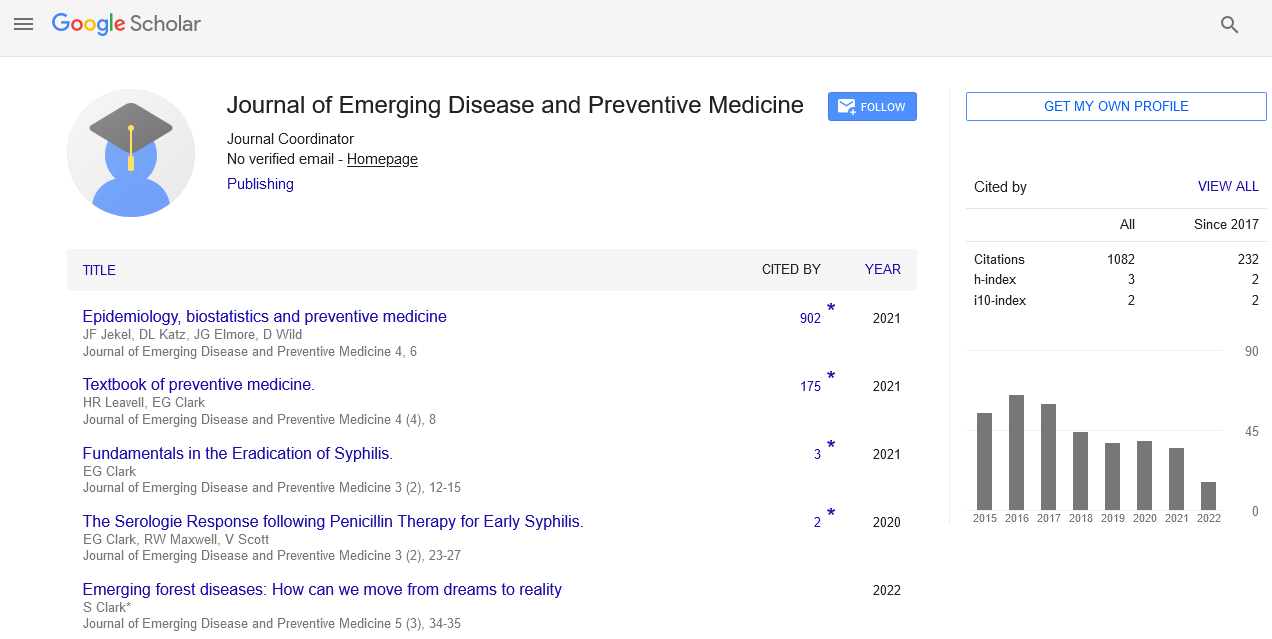Brief Note on COPD(Chronic Obstructive Pulmonary Disease)
Received: 04-Dec-2021 Accepted Date: Dec 18, 2021; Published: 25-Dec-2021
This open-access article is distributed under the terms of the Creative Commons Attribution Non-Commercial License (CC BY-NC) (http://creativecommons.org/licenses/by-nc/4.0/), which permits reuse, distribution and reproduction of the article, provided that the original work is properly cited and the reuse is restricted to noncommercial purposes. For commercial reuse, contact reprints@pulsus.com
Introduction
Chronic obstructive pulmonary disease (COPD) is an incurable lung disease that causes obstruction of the airways from the lungs. Symptoms include shortness of breath, cough, sputum production and shortness of breath. It is usually caused by prolonged exposure to irritating gases or particles, usually as a result of cigarette smoke. People with COPD are at higher risk for heart disease, lung cancer and a variety of other conditions. Emphysema and chronic bronchitis are two of the most common conditions contributing to COPD. These two conditions often occur together and can vary in size among people with COPD. Chronic bronchitis is an inflammation of the lining of the bronchial tubes, which carries air to and from the air sacs (alveoli) of the lungs. It is characterized by daily cough and mucus production (sputum).Emphysema is a condition in which the alveoli at the end of the small ducts (bronchioles) of the lungs are destroyed due to harmful exposure to cigarette smoke and other irritating gases and particles. Although COPD is a progressive disease that gets worse over time, COPD is treatable. With proper management, most people with COPD can achieve better symptom control and quality of life, as well as reduce the risk of other associated conditions.
Causes: The main cause of COPD in developed countries is smoking. In developing countries, COPD is more likely to occur in people who are exposed to smoldering fumes from cooking oil and heating in ventilated homes. Only some chronic smokers who develop clinical manifestations of COPD, although many smokers with a long history of smoking may develop reduced lung function. Some smokers develop rare lung conditions. They may be diagnosed with COPD until a thorough examination. Unlike other diseases, COPD often has a clear cause and a definite preventative approach, and there are ways to reduce the progression of the disease. Many conditions are directly related to smoking, and the best way to prevent COPD from smoking - or to stop smoking now. If you are a long-term smoker, these simple statements may not seem easy, especially if you have tried to stop - once, twice or many times before. But keep trying to stop. It is important to find a smoking cessation program that can help you to quit permanently. It is your best chance to reduce the damage to your lungs. Exposure to work from chemical fumes and dust is another risk factor for COPD. If you are working with these types of irritants, talk to your manager about the best ways to protect yourself, such as using respirators.
Reducing the burden of COPD: There is no cure for COPD but early detection and treatment are essential to delay the onset of symptoms and reduce the risk of fire. COPD should be suspected if a person has normal symptoms, and the diagnosis is confirmed by a respiratory test called spirometry, which measures how the lungs function. In low- and middleincome countries, spirometry is generally not available so diagnoses may be missed. There are a few actions that people with COPD can take to improve their overall quality of life and help control their COPD: Inhaled medicines can be used to improve symptoms and reduce inflammation. There are different types of inhaled medicines that work in different ways and can be given by combination inhalers, if available. Some inhalers open the airways - they may be given regularly to prevent or reduce symptoms, and to alleviate symptoms during a major rash. Inhaled corticosteroids are sometimes given in combination with these to reduce inflammation in the lungs. Inhalers should be taken using the correct method, and in some cases with a space machine to help deliver the drug to the airways more effectively. Access to inhalers is limited to most low- and middle-income countries - by 2019 salbutamol inhalers were commonly available in public health care facilities in about half of the low-income countries. The rash is usually caused by a respiratory illness - people can be given antibiotics or steroid pills in addition to sniffing or nebulised treatment as needed. People living with COPD should be given information about their condition, treatment and self-care to help them stay as active and healthy as possible.





